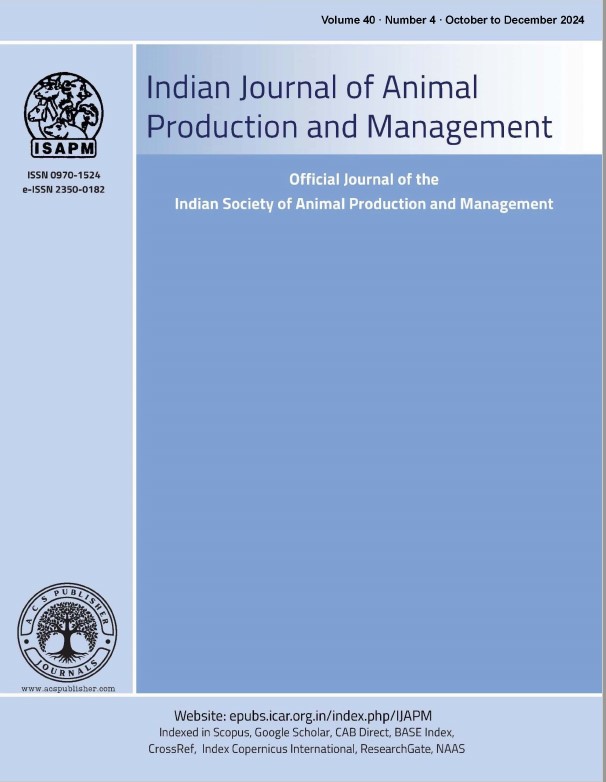PERFORMANCE OF JAPANESE QUAIL ON DIFFERENT MANAGEMENT SYSTEM
Keywords:
Japanese quail, deep litter system and cage systemAbstract
This study was conducted to investigate the effect of two management system; deep litter and cage system on performance of Japanese quail, as management plays an importanat role in growth, carcass quality in terms of yield and nutritional composition as well as laying performance. Two hundred Japanese quail of two weeks old were selected randomly and divided into two groups with two replicates of hundred quails in each with male and female ratio of 1:1 and housed in cages and deep litter system. Body weights, carcass yield, dressing percentage, egg production were recorded during the experimental period. The results revealed significant difference (p<0.01) between the two systems of rearing on most of the studied parameters. Increased body weight, feed conversion ratio and significantly higher dressing percentage (p<0.01) was observed in cage system. In the contrary percentage of laying, egg numbers, egg weight, yolk index, albumen index and shell thickness etc. are improved in deep litter system of management. Thhus, it may be concluded that although cage system is best suited for growth as well as carcass yield, deep litter system of management is more suitable and economical for rural people as this system of management also improves laying performance of Japanese quails.

